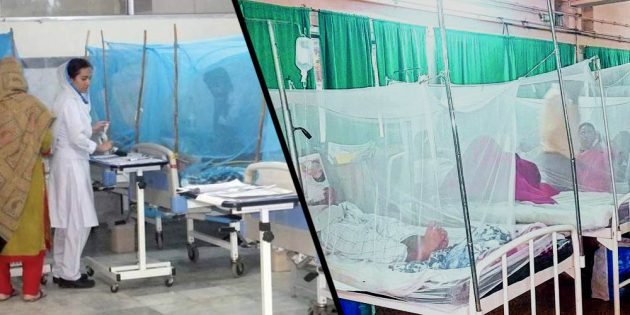In the previous few days, the twin cities have seen a dramatic surge in dengue cases, with 157 patients taken to hospitals on Wednesday (29 September).
99 patients affected by Dengue got admitted to the 3 hospitals of garrison city.
Even though dedicated dengue wards have been built at Holy Family Hospital and District Headquarters Hospital, but Benazir Bhutto Hospital, Cantonment General Hospital has failed to assign beds and has referred all dengue cases to Holy Family Hospital.
Dr. Sajjad Mahmood, the District Coordinator for Epidemic Prevention and Control, reported that 75 patients arrived from Islamabad out of 157 cases.
In addition, he said among the 24 dengue patients:
- 14 came from the cantonment areas.
- 10 from the limits of Rawalpindi Cantonment Board.
- 4 from the area falling under the administrative control of Chaklala Cantonment Board.
- 5 patients each came from Rawal Town and Potohar Town.
He also said that most patients came from:
- Misrial Road.
- Range Road.
- Shalley Valley.
- Dhoke Mustaqeem.
- Naseerabad.
- Dhoke Hassu.
- Satellite Town.
- Chaklala.
- Gangal union councils.
In the three government-run hospitals, he claimed, 103 of the 126 beds assigned for dengue patients were occupied.
According to a senior official with the health authority, his agency had frequently ordered the civic entities of the cantonment to take measures to remove dengue larvae shortly after the recent heavy rains.
Meanwhile, a meeting was conducted to assess the anti-dengue campaign, with Rawalpindi Cantonment Board Chief Executive Officer Umer Farooq Ali Malik in the chair.
Islamabad
In Islamabad, District Health Officer (DHO) Dr. Zaeem Zia reported 58 dengue cases, up from 10 the day before.
While breaking down the core of all cases, he said:
- 26 were from the rural areas.
- 13 from Tarlai.
- 5 from Koral.
- 2 each from Alipur and Bhara Kahu.
- 1 each from Sihala and Tarnol.
- 32 from urban areas.
According to him, there were 275 cases in the capital, with 178 reported from rural areas and 97 from urban areas.
Dr. Zia stated that a separate team from the District Health Office visited 2,405 households in the last 24 hours and discovered larva in stagnant water in 10 of them. Furthermore, he stated that two containers were found to be positive for larva during an open container check.
He stated that the teams destroyed 181 water containers and covered 649 and that 964 potential breeding locations were also eradicated.



